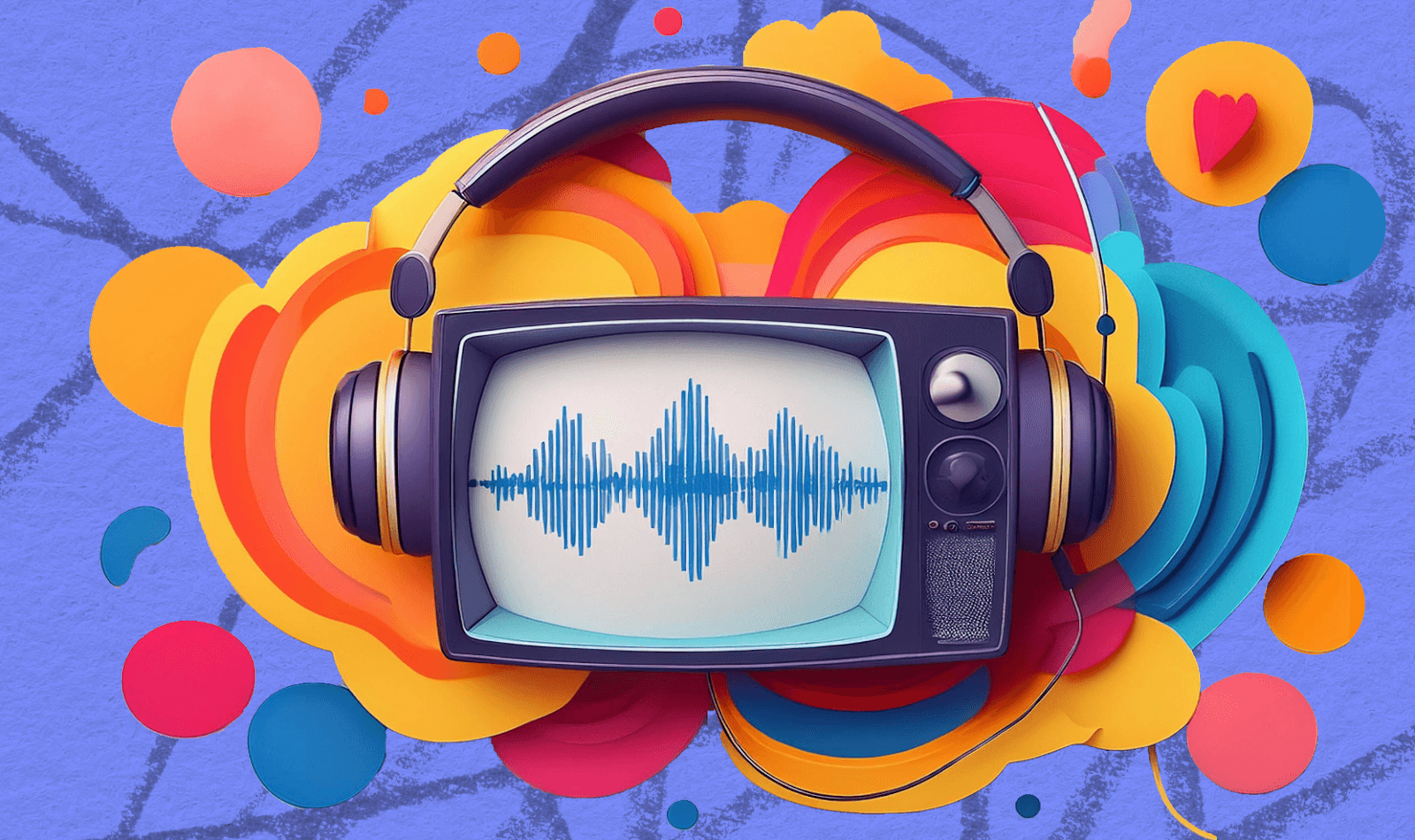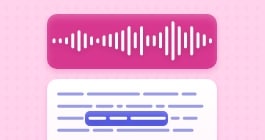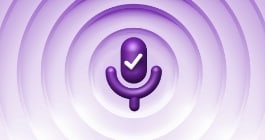Unlock more with the Adobe Podcast Premium plan 
- Video support for MP4, MOV, and more
- Bulk upload files for enhancement
- Adjust strength for a more natural sound
- Enhance up to 4 hours a day, files up to 1 GB
- No download limits on Studio projects
- Download original recordings, speaker-separated
- Customize audiograms and captions with themes
- Upload custom backgrounds for audiograms
- All Premium features for design
Enhance Speech
Studio
Design with Adobe Express Premium
How to use video in podcasts
Why video matters and how to get started.

Last updated: April 10, 2025
Author: Megan Schmidt, Writer & podcast producer
If you’ve stuck with an audio-only podcast, it might be time to start thinking about adding video to your workflow.
The nice part about video in podcasts is that it doesn’t have to be difficult or complex. However, the visual elements you select should always be high-quality and make sense for your material.
If you have no idea where to start, then you’re in the right place. We’ll cover methods you can use to integrate video into your podcast to expand where and how viewers can engage with your content.
Why video is a smart move
Between the success creators have seen on YouTube and Spotify’s new video features, it’s safe to say that video podcasts are here to stay.
We recently discussed several key reasons why video will improve most podcasts, where we point out:
- People engage better when visuals are involved because it helps maintain attention—from a neurological standpoint, people retain information like data and patterns faster and more efficiently when stacked against other formats.
- YouTube is now the leading destination for podcast content, which means you gain access to a new pool of potential viewers and listeners; adding video betters your chances of appearing organically.
- Using other video-centric social media platforms (TikTok, Instagram Reels, YouTube Shorts, etc.) further expands your presence, but you’ll need some video content in order to post.
Video is the most sought-after format on the web, so of course it ranks better than other forms of content. Plus, video is typically easy for both you as a creator and your listeners to share, making it easier to grow your audience.
Deciding on the type of video to use
You have a few different options at your disposal. Most podcasters opt to add quality cameras to record themselves and other hosts or guests, but there are still plenty of other ways to add video if a camera isn’t for you.
Adding recordings of yourself is a safe bet for most show formats because of the other kinds of communication that come through in video, like your body language or facial expressions. These recordings can often be used for the majority (or entirety) of your show when appropriate.
For those of you who don’t want to bother with a camera, consider trying something like this instead:
- Audiograms. This new feature in Studio allows you to easily add animated audio clips with waveforms that enable the visualization of highlights and quotes from content.
- Static images and graphics. Have you ever listened to a song on YouTube where the user or group simply uses the album cover for the video portion? Of course you have! Feel free to do the same with your podcast.
- Stock and fair use media. Stock media is always an easy option if you want actual video paired with your podcast audio. Plus, Adobe Stock images are included within Adobe Express Premium, which is included in the Adobe Podcast Premium bundle.
- Make individual clips on social media. Some podcasters may want to use video selectively, like when creating content for Instagram, TikTok, or other platforms that cater to short-form media. By learning how to use your preferred platform’s creator tools, making great clips can be quick and easy.
Methods for adding video to your podcast
In Adobe Podcast’s Studio, you can download an audiogram of your podcast. Audiograms are animated videos with a simple background, where the text from your transcript appears and moves in sync with the audio. This is a fast and easy solution for video.
If you’re looking for more control over the video you release, there is plenty of beginner-friendly software available. Check out solutions like iMovie or Adobe Express.
Or, If you’re video-averse but still want to take advantage of having content on YouTube, you’re in luck! You can easily create a podcast within YouTube Studio by connecting to your RSS feed, which you can learn how to do here.
Experiment with video to grow your audience
The use of video has been growing ever since YouTube came to the web in 2005. Since then, it’s been a leader in platforms that provide user-generated content (UGC).
It should come as no surprise that by bringing video into the mix, you can grow your audience because of how video helps your material “fit” other platforms. Plus, there’s the simple fact that people engage better when visuals are included.
Advanced editing is technical and challenging, but fortunately, many solutions on the market cater to novice users. And of course, Adobe Podcast subscribers can freely use our Audiograms to help add some visual flavor to their content!
About the author: Writer, comedian, podcast producer: Megan loves stories that stick, told sometimes with words, sometimes with waveforms, always with heart.



